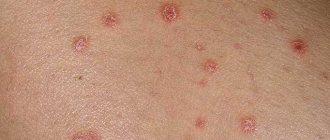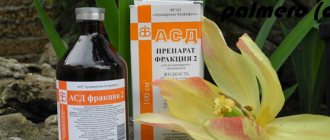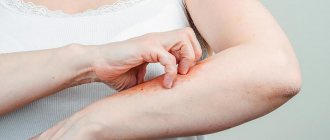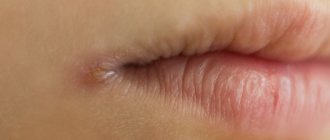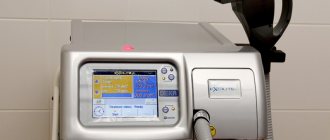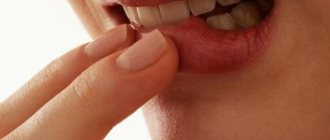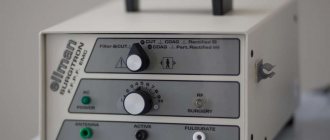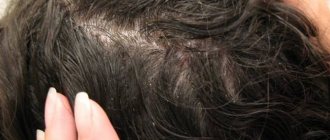Causes
The exact cause of psoriasis is unknown. Genetic predisposition plays a significant role in its development: approximately 40% of patients with psoriasis or psoriatic arthritis have a family history of the disease (the presence of psoriasis in close blood relatives).
The development and course of the disease are also influenced by lifestyle, environmental factors and habits: smoking, excess weight, taking certain medications (beta blockers, lithium, antimalarial drugs), infections, alcohol, stress.
Why does plaque psoriasis occur?
Scientists still cannot come to a consensus as to why plaque psoriasis occurs.
Among the main versions, a hereditary factor is put forward. But cases of the disease are increasingly being identified among people who did not have this pathology in their family. Therefore, today the main cause of the development of psoriasis is considered to be dysregulation of genes responsible for the immune response and for the formation of the skin barrier. Additionally, experts have identified a group of factors that could potentially trigger the development of plaque psoriasis or aggravate the course of psoriasis. These reasons include:
- stress;
- acute and chronic infectious diseases, especially tonsillitis;
- unbalanced diet with a predominance of fatty, spicy and salty foods, sweets and industrial confectionery products;
- presence of bad habits (drinking alcohol, smoking);
- disruptions in the functioning of the endocrine system, hormonal imbalance;
- living in environmentally unfavorable areas, working in hazardous industries;
- taking certain medications.
IMPORTANT! Plaques on the skin sometimes look scary, which is why many people think that the disease can be contracted through everyday contact, as a result of touching. Psoriasis is an autoimmune pathology. This is not a contagious disease, but a feature of the functioning of the body. A person with characteristic skin plaques is not contagious. And it is necessary to talk about this in society, because due to limited contacts and obvious exclusion of people, the patient may become depressed. This situation does not contribute to recovery, but only aggravates the course of the disease.
Treatment of psoriasis
Existing treatment methods help cope with exacerbations, prolong periods of remission and significantly improve the quality of life of patients. However, psoriasis cannot be completely cured; even with long-term good condition, repeated exacerbations are possible.
In the treatment of psoriasis, medications for external use (lotions, creams, ointments, shampoos for the scalp), as well as systemic therapy, are used.
The choice of treatment method depends on the severity of the disease, localization and extent of the process, the presence of concomitant diseases, individual response to previous treatment, and the patient’s capabilities and desires.
Features of treatment
Area-limited psoriasis in most cases requires only external therapy. It includes the use of the following groups of drugs:
- glucocorticosteroids;
- vitamin D analogues;
- retinoids;
- calcineurin inhibitors;
- tar preparations.
In more severe cases, in addition to external therapy, systemic therapy and phototherapy are used.
The following groups of drugs are used for systemic therapy of psoriasis:
- retinoids;
- immunosuppressants (methotrexate, cyclosporine, apremilast);
- genetically engineered biological products.
How is psoriasis treated at the Rassvet clinic?
The dermatologist conducts a full examination of the patient’s skin, nails, hair and mucous membranes, collects anamnesis and, based on the data obtained, makes a diagnosis. In the vast majority of cases, additional manipulations and studies are not required. Sometimes a skin biopsy is performed to clarify the diagnosis. If you suspect the presence of concomitant diseases, you may need to consult other specialists (general practitioner, rheumatologist, ophthalmologist).
PSORIASIS: UNUSUAL SKIN MANIFESTATIONS
| Figure 1. Typical chronic plaque psoriasis of the elbow with erythema, skin thickening, and silvery scales at the surface of the lesion. |
How to recognize unusual manifestations of psoriasis? What is the significance of pustules in psoriasis? How do the manifestations of psoriasis change depending on the location?
Being a genetically determined disease, psoriasis in its clinical manifestations takes various forms depending on the trigger factor that triggered its development - infection, injury or stress. A common dermatosis affecting up to 2% of the world's population, it is now considered a T cell-mediated disease in which skin changes are driven by a cytokine cascade.
| Figure 2. Guttate psoriasis in a five-year-old girl. Mostly teardrop-shaped lesions are located on the trunk; in some places small plaques merge into large lesions |
The most common form of psoriasis is chronic plaque psoriasis (Figure 1). It has the following clinical signs:
- thickening of the skin caused by increased division of keratinocytes and acanthosis;
- silvery peeling caused by delayed maturation of keratinocytes and parakeratosis;
- reddening of the lesions due to vascular proliferation and capillary tortuosity.
Most patients present with typical plaque psoriasis, but there are also unusual manifestations that can cause diagnostic difficulties.
| Figure 3. Koebner phenomenon in a 45-year-old man who scratched his chest while cutting roses. Note the scaly, teardrop-shaped lesions flanking the linear psoriatic streaks consistent with the notched test |
Acute guttate psoriasis is most common in children, but can also develop in adults, especially with exacerbation of psoriasis.
As a rule, seven to ten days before the rash, the patient complains of the appearance of a sore throat. The rash in acute guttate psoriasis does not cause additional complaints, only occasionally accompanied by itching. It can cover the torso and limbs, less often the face.
Individual lesions are small, erythematous areas with scaly surfaces. This form is called teardrop-shaped because the rash resembles raindrops (Fig. 2).
| Figure 4. Ring-shaped psoriasis of the legs in a 28-year-old woman. Note the clear area within the ring and peripheral erythema with silvery scales |
Guttate psoriasis is easily confused with pityriasis versicolor and pityriasis versicolor. With pityriasis rosea, peeling is usually located at the edges, like a lace collar; with pityriasis versicolor, hypo- or hyperpigmentation of the rash is observed.
Koebner phenomenon. In 25% of patients with psoriasis, the Koebner phenomenon can be detected, which consists in the fact that psoriasis manifests itself in areas of skin damage, such as surgical scars, burns and abrasions, as well as other minor violations of the integrity of the skin.
Diagnosis of psoriasis in Koebner's areas can be difficult if there is no previous diagnosis and if psoriasis appears only in certain places on the skin. In general, the skin elements at the sites of damage do not differ from a typical psoriatic plaque and have its characteristic redness, silvering and thickening of the skin, but the shape of the lesions is linear (Fig. 3).
| Figure 5. Pustular psoriasis of the sole of the foot. Active purulent foci are located along the periphery of the affected area. Visible hemorrhagic pustules and brown spots in place of dried pustules |
Ring-shaped psoriasis. In some patients, psoriasis spontaneously undergoes reverse development, and ring-shaped or geographical lesions may form in place of the plaque. As in typical cases of psoriasis, the affected area is red, thickened, and covered with silvery scales, but clear skin in the center of the lesion may make diagnosis difficult (Figure 4).
Differential diagnosis includes dermatophyte infections and discoid lupus erythematosis. However, it should be borne in mind that with fungal infections, erythema is not the main clinical sign, and with lupus erythematosis, scarring of the central zone is detected.
| Figure 6. Acrodermatitis Allopeau; pronounced purulent changes in the nails are visible |
Palmoplantar pustules. The origin of palmoplantar pustules is not fully understood, but it has been noted that they sometimes accompany psoriasis of any other localization or themselves serve as its manifestation.
The palms and soles are affected symmetrically, with the development of pustules ranging in diameter from a few millimeters to one centimeter.
Usually the pustules are yellow, but sometimes they become green or hemorrhagic (Fig. 5). Gradually they dry out and form a dry spot, slightly rising above the surface of the skin.
| Figure 7. Acute pustular psoriasis in a 30-year-old man |
When pustules form on the soles and palms, patients usually complain of itching. First of all, the differential diagnosis is made with athlete's foot; For this purpose, skin scrapings are taken.
When the process spreads, the nails may be involved. Purulent changes in the nail plate sometimes lead to nail loss and permanent nail dystrophy. Allopeau's disease is especially severe, in which pustular psoriasis causes destruction of the nail apparatus (Fig. 6).
Acute pustular psoriasis. Pathogenetically, with psoriasis, polymorphonuclear leukocytes accumulate in the dermis, which infiltrate the epidermis with the formation of microabscesses.
With the most acute rashes, accumulations of polymorphonuclear cells in the epidermis become extensive and visible, forming a picture of pustular psoriasis. In this case, large areas of the skin are erymatous and strewn with small yellow pustules (Fig. 7). The latter often merge, the upper layer of the epidermis is torn off and extensive erosions are formed.
| Figure 8. Erythrodermic psoriasis in a 60-year-old woman previously taking systemic steroids for asthma. Note erythroderma and generalized skin desquamation |
Pustular psoriasis is a condition that requires emergency care, especially if the rash is widespread. Sick people should be urgently referred to the local dermatology department.
Purulent lesions can also accompany chronic psoriasis, which they try to treat with tar. The morphology of pustules in chronic psoriasis is very different from acute rashes and is presented in the form of individual pustules, usually found at the edges of psoriatic plaques.
Erythrodermic psoriasis. Sometimes patients with psoriasis develop erythroderma, which affects the entire body. In this case, the entire skin turns red and becomes covered with thin scales (Fig. 8).
The skin often swells, the patient suffers from fever and fluid loss. As a rule, a secondary infection occurs. Patients with erythrodermic psoriasis require immediate treatment and should be urgently hospitalized.
| Figure 9. Rupioid psoriasis with saucer-shaped scaly lesions on the lower leg |
In some patients, the erythrodermic form develops for no apparent reason, but in most cases it is possible to identify a trigger factor, which most often turns out to be sudden withdrawal of therapy, for example, when, for other indications, it is necessary to urgently stop taking corticosteroids.
Rupioid psoriasis. This is a form of psoriasis in which the superficial scales thicken and stick together, taking on a saucer-shaped appearance (Figure 9).
Psoriasis on pigmented skin. Like many inflammatory dermatoses, the manifestations of psoriasis on pigmented skin can be difficult to recognize, mainly because they are very different from the psoriasis that develops in people with white skin. In the latter, redness, a raised surface and silvery peeling of the lesions are clearly visible. On pigmented skin, redness is replaced by purpleness, and flaking is often less noticeable.
| Figure 10. Plaque psoriasis in a man of Asian descent; typical plaques are visible on the elbows and back |
Peeling can be intensified by scratching the surface of the lesion. But even at this, the unusual color sometimes confuses the doctor (Fig. 10).
- Psoriasis of various localizations
Psoriasis appears differently in different areas of the body than in typical chronic plaque psoriasis.
Folds. If psoriasis develops in the armpits (Figure 11), groin, or creases of infants, the typical silvery flaking may be absent. Only clearly limited areas of shiny erythema are detected. If typical psoriatic plaques are not found in other areas, it can be difficult to make a diagnosis.
| Figure 11. Psoriasis of the armpit with well-demarcated erythema and absence of scales |
Mucous membranes. Psoriasis can develop on the mucous membranes, affecting the tongue, glans penis or vagina. On the glans penis and vagina there is no typical peeling, the disease is manifested by clear areas of erythema, often velvety to the touch.
In circumcised men, the erythema is drier and sometimes exhibits typical flaking. A “geographic tongue” is observed (Fig. 12).
Nails. Psoriasis can affect the nail bed or nail plate. In the latter case, the nails deepen or acquire a pointed shape. Involvement of the nail bed in the process leads to onycholysis or subungual hyperkeratosis.
| Figure 12. Psoriasis of the tongue, manifested by a “geographic pattern” |
Pointed nails are not pathognomonic for psoriasis and are found in lichen planus and focal alopecia.
Onycholysis can be traumatic, such as in secretaries, or associated with fungal infections. With the development of onycholysis in space
| Figure 13. Psoriasis of the scalp and retroauricular area. Note this patient's severe nail damage caused by psoriasis |
Pseudomonas is detected between the nail and the nail bed, which is manifested by a black staining of the nail and sometimes makes the doctor suspect melanoma.
Scalp. Scalp psoriasis is no different from typical skin manifestations of psoriasis. But because the lesions are hidden by hair, it is difficult to distinguish from other causes of itchy and flaky scalp, such as seborrheic dermatitis and athlete's foot.
In typical cases, scalp psoriasis appears as well-demarcated areas of erythema, skin thickening and silvery peeling (Fig. 13). Seborrheic dermatitis is more diffuse, the scales do not stick together as much and are more greasy. In scalp lichen, the entire scalp is covered with very dry pityriasis-like scales.
It is important to distinguish scalp psoriasis from discoid lupus erythematosis of the scalp. Clinically, the lesions look the same, but in psoriasis, peeling is accompanied by clearing of the central part of the lesions, which leads to alopecia.
How to treat nail psoriasis?
Psoriatic changes make the nails look scary. This causes worries, fears, and complexes, especially in women. I want to hide and not show my hands to anyone, it’s awkward to leave the house, and I constantly feel embarrassed. Those around you immediately believe that it is something contagious and instinctively step aside. Although in fact the disease is not contagious, it is not transmitted from one person to another, even through close contact.
Nail psoriasis causes serious psychosocial and cosmetic problems. Therefore, the main goal of treatment is to improve the appearance of hands. It will take time to notice positive changes. This is due to the slow growth of the nail plate and the cumulative effect of the drugs used.
Medicines include systemic and local agents. For each person, the doctor selects them individually, taking into account the symptoms and severity of the condition. Sometimes you have to try different treatment regimens to achieve results. Reviews on nail psoriasis forums from patients confirm this fact.
In addition to medications, a course of phototherapy or insolation is sometimes prescribed. Impact on the affected areas of the skin and nails helps stop excessive cell division and plaque formation, relieve inflammation and itching.
In case of severe damage, when restoration of the nail plate is impossible, it is removed. Subsequent therapy is aimed at growing a new healthy nail. Vitamins help speed up growth. They are prescribed internally and externally in the form of oil solutions (Aevit) to treat the skin of the finger, nail bed, and growing plate.
Any medications are used only under the supervision of a dermatologist, carefully following the doctor's instructions. Self-medication of psoriasis can aggravate the disease, prolong the course of therapy, and create serious complications.
Systemic drugs
If necessary, systemic medications are prescribed by a dermatologist.
These are the same remedies that are used for psoriatic skin rashes:
- Cyclosporine. Refers to immunosuppressants or drugs that suppress the activity of the immune system. Stops the formation of new psoriatic plaques and reduces the size of existing ones. It is mainly used only for severe forms of psoriasis;
- Methotrexate. Affects metabolism inside cells, blocks the vitamin activity of folic acid. In psoriasis, it exhibits an immunosuppressive effect, suppressing the pathological autoimmune reaction;
- Retinoids. These are synthetic analogs of vitamin A that affect immune cells and normalize the reproduction and development of keratinocytes. Suitable for long-term use;
- Wobenzym. An enzyme preparation that helps relieve the unpleasant symptoms of psoriasis during exacerbation. Relieves inflammation and swelling. It has a general strengthening effect, prevents relapses and further deterioration.
Self-medication with the listed drugs is unacceptable, as there are contraindications and dangerous side effects.
Local remedies
Local remedies for nail psoriasis include:
- Ointments based on medical solid oil (Kartalin, Magnipsor, solid oil ointment). They have an anti-inflammatory, regenerating, exfoliating effect;
- Hormonal ointments with corticosteroids. They are first-line drugs to relieve symptoms. Relieves inflammation, pain, redness. Improves the condition of the nail bed and matrix;
- Creams Calcipotriol, Daivonex. Contains a synthetic analogue of vitamin D. Regulates immune processes in the skin, slows down the accelerated division of cells in the stratum corneum. Particularly effective for subungual hyperkeratosis;
- Ointments with retinoids (Zorak, Tazarotene). Exfoliate inflamed, damaged epidermal cells, smooth the surface of the skin. They help with psoriatic dystrophy affecting the nail bed and matrix, but the therapeutic effect develops slowly;
- Keratolytic varnishes, gels with urea. Exfoliate, smooth the surface of the nail plate, nourish.
Folk remedies
Folk remedies are also used to treat nail psoriasis at home. In agreement with the doctor, they are used as an addition to the main medications.
Baths, compresses, lotions with decoctions of medicinal herbs that have an antiseptic and healing effect help. These include bay leaf, sage, oak bark, chamomile, and celandine.
Atypical type of psoriasis on the legs
Psoriatic rashes may have uncharacteristic localization and appearance. This form of psoriasis is localized not on the extensor side, but on the flexor side of the leg joints, in the area of skin folds. Since the skin in this area constantly sweats, the scales on the rash are not always noticeable in the initial stage. Papules in the initial stage of the disease may look like ordinary prickly heat and be accompanied by severe itching.
Subsequently, the process spreads to surrounding areas and acquires a characteristic appearance. The stationary and regressive stages proceed in the same way as in a typical disease.
Table of contents
- Etiology and pathogenesis
- Pathogenesis of psoriasis
- Clinical manifestations
- Accurate diagnosis and verification of the severity of psoriasis
- Principles of treatment
Psoriasis is a complex chronic multifactorial inflammatory disease characterized by excessive proliferation of epidermal keratinocytes and an increase in their turnover rate. It can begin at any age, but more often at 20–30 or 50–60 years.
In our company you can purchase the following equipment for diagnosing psoriasis:
- FotoFinder (FotoFinder)
On average, 2–3% of people worldwide suffer from psoriasis, but the incidence varies greatly regionally. For example, in the USA the prevalence is about 2.2%, and among South American Indians it is 0%, i.e. Not a single case of psoriasis was identified in a survey of 26 thousand people. The disease is more often diagnosed in light-skinned people (2.5%) than in dark-skinned people (1.3%).
According to ICD-11, psoriasis is included in group 14 “Skin diseases”, subgroup “Papulosquamous diseases”, section EA90 “Psoriasis”.
Prevention methods
An additional condition for containing the worsening of the disease is to follow several recommendations:
- Switching to dietary nutrition. Experts strongly advise patients with psoriasis to avoid foods containing simple sugars, animal fats, as well as foods with a high degree of allergenicity (nuts, alcohol, chocolate, etc.). The basis of nutrition for psoriasis should be fermented milk products, vegetable oils, cereal-based cereals, as well as dietary types of meat and fish.
- Maintain personal hygiene. For personal hygiene, you should use delicate products that do not contain dyes, artificial fragrances, or aggressive synthetic components. Water procedures should last no more than 15 minutes, and the water should be warm.
- Wearing underwear made from natural soft fabrics. It is better to choose loose-fitting clothes so that they do not rub or restrict movement. Products made from natural cotton and knitwear will be optimal. Synthetics and rigid fabrics must be excluded.
Some patients may require psychocorrection, taking specialized medications with a sedative, sedative or antidepressant effect.
What is selective phototherapy
This physiotherapeutic method uses mid-wave ultraviolet rays. Their effect is extremely beneficial, and is manifested in the complete disappearance of psoriasis, and the treatment has practically no contraindications.
For use, both narrow-band and broadband units are used that generate ultraviolet radiation, making it possible to act strictly on rashes without affecting healthy areas. Specialist dermatologists at the Moscow Aloderm clinic, using the latest generation technologies, achieve lasting results, eliminating the manifestations of psoriasis and will allow you to abandon the constant use of hormonal ointments.
Clinical researches
The conducted clinical study proves the high efficiency, safety and tolerability of products for daily skin care of children with mild and moderate forms of atopic dermatitis and during remission, accompanied by a decrease in the quality of life of patients.
In the course of research conducted by the Union of Pediatricians of Russia, it was found that La-Cree cream for sensitive skin:
- reduces itching and irritation;
- relieves skin redness;
- moisturizes and gently cares for the skin.
Based on the results of clinical studies, the product packaging contains information that the creams are recommended by the St. Petersburg branch of the Union of Pediatricians of Russia.
Sources:
- Andropova T.V., Gudina M.V., Odintsova I.N., Hygiene of children and adolescents, Siberian State Medical University Publishing House, 2022.
- Cohen Bernard A. Pediatric dermatology, MEDpress-inform, 2015.
- Bonifazi Ernesto, Differential diagnosis in pediatric dermatology, Panfilov Publishing House, Binom. Knowledge Laboratory, 2014.
Symptoms of the disease
Spots from light pink to deep red, covered with small silvery scales, are usually located in the elbows and knees, hidden under the hair on the head, affect the skin in the lumbar and buttock areas, and are also often found in the genital area. As the disease worsens, small spots on the skin covered with scales tend to unite and merge, and over time they increase in size, affecting new areas of the body.
Figure 1. Plaque psoriasis at the hairline.
Accurate diagnosis and verification of the severity of psoriasis
The severity of psoriasis depends on the area of skin damage:
- Light - up to 2% of the body surface.
- Average - from 3 to 10%.
- Severe - more than 10% of the body surface.
It is not possible to determine the severity of psoriasis by eye; one can only guess it based on the experience of a specialist and the external signs of the disease in the patient. To accurately diagnose psoriasis, instrumental methods should be used - for example, FotoFinder PASIvision .
FotoFinder PASIvision is based on Automatic Total Body Mapping (ATBM) technology, which allows you to quickly obtain standard images of the patient's entire body. A special camera takes 16 digital photographs, including those using a polarizing filter.
Next, the program automatically analyzes the area of skin lesions and the severity of psoriasis according to PASI - Psoriasis Area and Severity Index . PASI is the most important criterion not only for primary diagnosis, but also for determining the effectiveness of treatment, disease control and prognosis.
To identify the dynamics and choose a method of effective treatment of psoriasis, the doctor can open two images of the same area at once, taken at different times. After selecting the desired comparison method, the program automatically calculates the PASI of the specified areas - this is the most visual and reliable method of monitoring the effectiveness of the therapy.
The doctor has access to convenient sorting of images and patients, as well as a number of reports that can be printed or sent by email.
Differences from other pathologies
Symptoms of nail psoriasis are also observed with other nail problems. But people with psoriasis usually have manifestations of the disease on the skin, so it is enough to carefully examine the body. If psoriatic changes are present only on the nail plate, the diagnosis becomes more difficult. It is important to ask the patient whether his parents had this disease. If necessary, to clarify the diagnosis, the doctor will prescribe a biopsy of the nail bed, examine the skin with a dermatoscope, and take a scraping from the altered part of the plate to identify fungal pathogens.
In the absence of manifestations on the skin, psoriasis is difficult to distinguish from a fungal nail infection (onychomycosis). External symptoms are similar: onycholysis, clouding, thickening, destruction of the nail plate. Fungus or psoriasis on the nails can be determined after a mycological examination of scrapings from the affected part. With onychomycosis, fungi will be detected. In 35% of cases, both diseases are present simultaneously. Inflammation, which occurs in psoriasis, facilitates the penetration and reproduction of pathogenic pathogens. When a mycotic infection occurs, the symptoms of nail psoriasis will intensify.
Psoriasis is often confused with another similar skin disease - eczema, which also affects not only the skin, but also the nails.
How to distinguish nail psoriasis from eczema? Look for skin rashes. With eczema, watery blisters form, the elements of the rash become weeping, and then become covered with crusts. Eczema appears only on sensitive areas of the skin, on the inner flexor surfaces of the knee and elbow joints. With psoriasis, rashes can appear on any part of the body.
